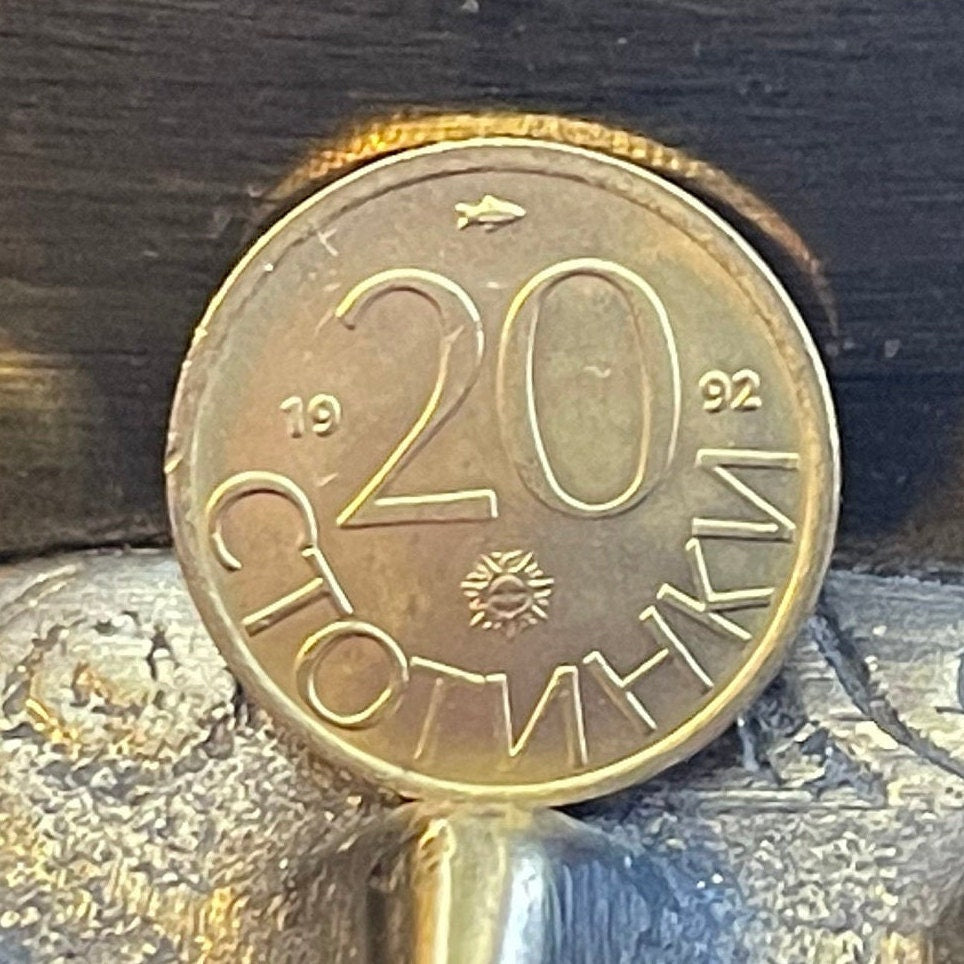elemintalshop
Ancient Lion 20 Stotinki Bulgaria Sculpture Authentic Coin Money for Jewelry and Craft Making
Ancient Lion 20 Stotinki Bulgaria Sculpture Authentic Coin Money for Jewelry and Craft Making
Couldn't load pickup availability
Ancient Lion Sculpture Bulgaria 20 Stotinki Authentic Coin Charm for Jewelry and Craft Making
Obverse: Ancient lion sculpture left within circle.
Lettering: РЕПУБЛИКА БЪЛГАРИЯ
Translation: Republic of Bulgaria
Reverse: Denomination divides date.
Lettering:
20
19 92
СТОТИНКИ
Translation:
20
1992
Stotinki
Features
Issuer Bulgaria
Period Republic (1990-date)
Type Standard circulation coin
Year 1992
Value 20 Stotinki (0.20 BGL)
Currency Third lev (1962-1999)
Composition Nickel brass
Weight 2 g
Diameter 19.2 mm
Thickness 1.15 mm
Shape Round
Orientation Medal alignment ↑↑
Demonetized 1999
Number N# 7876
References KM# 200, Schön# 198
Wikipedia:
Historic range of Panthera leo
In Southeast Europe, the lion inhabited part of the Balkan peninsula up to Hungary and Ukraine during the Neolithic period. It survived in Bulgaria until the 4th or 3rd century BC. Around 1000 BC, it became extinct in the Peloponnese. It disappeared from Macedonia around the first century AD, from Western Thrace not before the 2nd century AD and from Thessaly possibly in the 4th century AD; Themistius regretted that no more lions could be furnished for beast-shows.
The Löwenmensch figurine found in Germany has been dated to the Upper Paleolithic during the Pleistocene, about 35,000 to 40,000 years ago. Lions feature in ancient Greek mythology and writings, including the myth of the Nemean lion, which was believed to be a supernatural lion that occupied the sacred town of Nemea in the Peloponnese. Homer mentioned lions 45 times in his poems, but this could have been due to his experience in Asia Minor. Phalaecus, a tyrant of Amvrakia (modern-day Arta), was allegedly killed by a female lion due to his holding a newborn lion cub, after finding it on a hunting expedition. Conon refers to the myth of how Olynthus city got its name, when during around the period of the Trojan War, son of Strymon, Olynthos during a lion hunt was killed by a lion. According to Herodotus lions occurred between Achelous river and Nestus, being plentiful between Akanthos and Thermi. When Xerxes advanced near Echedorus in 480 BC, the troops' camels were attacked by lions. Xenophon stated around 400 BC that lions were hunted around Mount Kissos, Pangaio, the Pindus mountains and elsewhere. Aristotle in the 4th century BC provided some data on lion distribution, behaviour, breeding and also anatomy. According to him, lions were more numerous in North Africa than in Europe; they had approached towns, and attacked people only if they were old, or had poor dental health. Pliny the Elder mentions that European lions were stronger compared to those from Syria and Africa. In the 2nd century AD, Pausanias referred to lion presence east of Nestus in Thrace, in the area of Abdera. He also referred to a story about Polydamas of Skotoussa, an Olympic winner in the 5th century BC, who allegedly used his bare hands to kill a lion on Thessalian part of Mount Olympus; and to one about Caranus of Macedon who according to the Macedonians, raised a trophy that was thrown down and destroyed by a lion that was rushing down from Mount Olympus.
Share



















